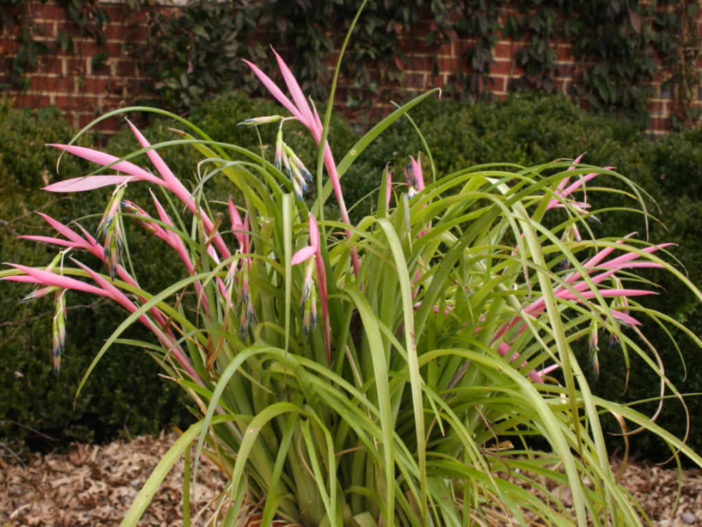Scientific Name
Billbergia nutans H.Wendl. ex Regel
Common Name(s)
Queen's Tears, Friendship Plant
Synonym(s)
Billbergia bonplandiana, Billbergia schimperiana
Scientific Classification
Family: Bromeliaceae
Subfamily: Bromelioideae
Genus: Billbergia
Etymology
The specific epithet "nutans (NUT-ans)" means "nodding" and refers to the way the flowers are held in pendant clusters.
Description
Billbergia nutans is an epiphytic bromeliad that forms clumps of funnel-shaped rosettes of arching, slender, bronze-green leaves with small teeth along the margins. The leaves can grow up to 1 foot (30 cm) long.
In spring, the arching flower stalks carry pink bracts and pendant flowers with chartreuse green petals edged with royal blue.

Hardiness
USDA hardiness zones 10a to 11b: from 30 °F (−1.1 °C) to 50 °F (+10 °C).
How to Grow and Care
These plants are widely available at nurseries and garden centers. They need a medium to bright light as indoor specimens.
Bromeliad care is easy and requires no special tools or fertilizers. Feed the plants with a half-strength fertilizer every month in the growing season.
Water needs are easily achieved by filling the cup at the base of the leaves. The water that collects in the pot should be emptied weekly to remove debris and the dead insects the stagnant water tends to lure into the cup.
Set the pot in a saucer of gravel filled partially with water to increase humidity and help provide a moist atmosphere. Ensure the roots are not submerged in the water, which might invite rot.
Some Bromeliads grow well as Air Plants, glued or nested onto logs, moss, or other non-soil organic items.
Learn more at How to Grow and Care for Bromeliads.
Origin
Billbergia nutans is native to Brazil, Paraguay, Uruguay, and Argentina.
Links
- Back to genus Billbergia
- Succupedia: Browse succulents by Scientific Name, Common Name, Genus, Family, USDA Hardiness Zone, Origin, or cacti by Genus
Photo Gallery
Click on a photo to see a larger version.



